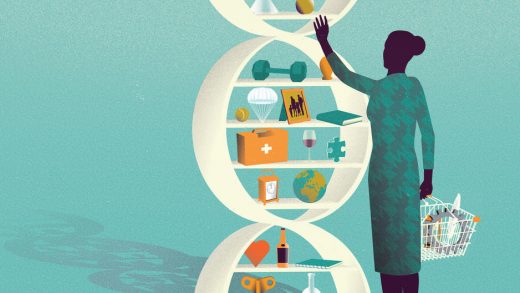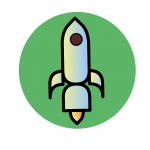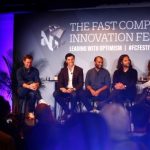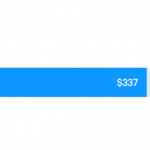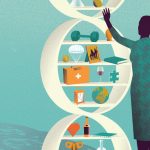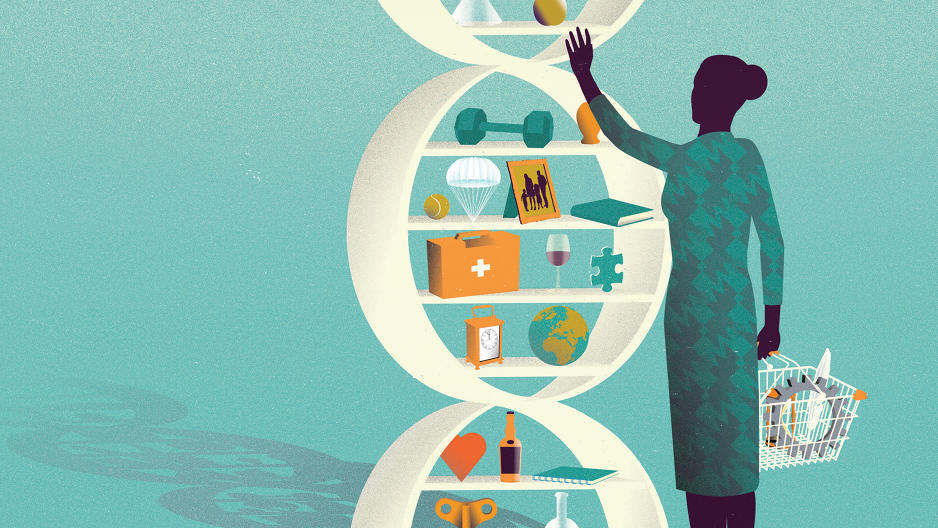Genetics Startup Helix Wants To Create A World Of Personalized Products From Your DNA
Before his death from pancreatic cancer in 2011, Steve Jobs paid $100,000 to have his DNA sequenced. It was a rare and expensive move that, according to biographer Walter Isaacson, provided insight into potential treatments and allowed doctors to customize his drug regimen. Five years after Jobs’s death, that same kind of sequencing is widely available and costs just a few thousand dollars—or less.
The company most responsible for revolutionizing access to DNA isn’t a household name. Illumina is a $20 billion–plus genomics powerhouse whose supercomputers have sequenced some 90% of all the DNA data ever processed. Its machines have helped make genomics a compelling tool, used to treat diseases, predict drug responses, and identify which genetic mutations increase our risk of serious illness. They’ve also made it affordable for companies such as Ancestry.com and 23andMe to offer genealogy tests to millions of people. Now there’s a next wave of genomics on the rise, one that promises to take the science far beyond its initial uses. And the best way to understand the coming transformation is by looking at an Illumina spin-off called Helix.
Launched this fall with $100 million in funding, Helix is on a mission to democratize genomics. There are three levels of technology available today for decoding human DNA. At the top end is whole genome sequencing (what Steve Jobs had done), an exhaustive process that provides a massive volume of information, sometimes more than scientists know what to do with. Cheapest and most widely used is genotyping, which involves examining a predetermined set of sites in the genome from which one can infer ancestry, genetic relationships, and some disease risks. In the middle is exome sequencing, which usually costs less than $1,000 and provides a robust portrait of a person’s genetics by mapping the entire protein-coding region of the human genome.
The amount of information you can glean from genotyping versus exome sequencing “is like night and day,” says Eric Topol, a cardiologist and geneticist at San Diego’s Scripps Research Institute. Exome sequencing can identify genes and variants associated with complex diseases. It could also, according to Helix, be used to unlock insights into an individual’s lifestyle and personality traits. It’s this type of sequencing—faster and cheaper than ever (thanks, in part, to Illumina)—that Helix plans to exploit.
The company has begun to partner with labs, clinics, and consumer brands to identify and create novel products based on genetic information. Imagine a nutrition company offering bespoke supplements, or a fitness label creating shoes tailored to a person’s genetic profile. This direct-to-consumer market could be worth anywhere from $2 billion to $7 billion in the coming years, according to a recent report from UBS. Eventually, Helix wants to build an app store–like platform where consumers can access their data, and discover a marketplace of applications that interpret and build on it. Get someone to sequence their DNA just once, and you can offer them a lifetime of insights as new ways to interpret genomics emerge.
“We want to deliver bite-size information about your genome, at just the right time of your life,” says CEO Robin Thurston, who joined Helix from Under Armour, where he oversaw the company’s connected fitness platform as chief digital officer after selling the workout-tracking app MapMyFitness to it in 2013. With a team of more than 30 PhDs at its lab in San Diego and access to Illumina’s supercomputers, Helix subsidizes the cost of sequencing in exchange for a share of its partners’ revenue. It takes care of interpreting genetic data when needed and vetting products for scientific integrity.
The first Helix-powered product to hit the market is National Geographic’s Geno 2.0 test, which provides information on users’ family trees. While National Geographic has marketed a similar test for nearly a decade, the partnership with Helix allowed it to drop the price from $200 to $149. Even more, customers won’t need to be resequenced if they sign up for a different application from National Geographic, or any other Helix partner, in the future. “This will be the first deep-sequencing test broadly available on the consumer market,” says Thurston.
Related Video: This Company Literally Wants Your Blood To Sell You Things
The partnership puts Helix in direct competition with Illumina clients 23andMe and Ancestry.com, which both rely on genotyping. That may be by design. “We have a special economic relationship [with Helix],” says Jay Flatley, Illumina’s executive chairman and former CEO. “It’s what allows Helix to do the sequencing at a subsidized cost and build out the business model.” Flatley is hoping Helix’s ability to offer affordable exome sequencing will convince these other consumer genomics companies to join the platform: “It’s a model that no other company can do,” he says.
Helix’s other early partners include prominent medical providers, such as LabCorp, the Mayo Clinic, Duke University, and Mount Sinai. The latter is developing an application that will inform prospective parents about their risks of passing on genetic disorders to children and provide access to genetic counseling. But Helix is also actively courting major consumer brands—the kinds of partners that can make its app-store model mainstream. (It is rumored to be in talks with Weight Watchers and a major fitness brand, though the company declined to disclose names.)
And more playful products are in the works, too. Early next year, a company called Exploragen plans to launch a wine-recommendation engine, Vinome, based on recent research into how DNA informs people’s perception of taste. “With incredible precision, we can identify a taste profile that you are most likely to enjoy,” claims Vinome developer Ronnie Andrews. “And then we ship you wines.”
There are still significant challenges, of course, before a DNA-based app store goes viral. Privacy and security concerns around genetic data remain deeply ingrained. (DNA doesn’t just reveal people’s own secrets, but those of their relatives, too.) Already, while consumers are currently protected from being denied health insurance or employment based on their genetic information, they can be denied life insurance, long-term care, or disability coverage.
At the other end of the spectrum, bioethicists are concerned that businesses like Helix might have a financial incentive to keep aggregate DNA data private, when it might otherwise be used for the common good. The White House recently put $215 million behind the Precision Medicine Initiative, an effort to sequence 1 million people’s DNA for research purposes over the next three or four years. 23andMe selectively works with pharma companies and researchers, sometimes free of charge. Would new consumer-facing vendors choose to hoard such information?
Helix has no immediate plans to provide such access, but hasn’t ruled it out. In terms of privacy, it employs data encryption and authentication requirements for access to its storage platform. It will also give customers control, allowing them to choose how their information will be used and whether they want to opt in for new product offerings.
But perhaps the most basic challenge facing Helix is getting the science to catch up to its ambitions. Even in medicine, where most of the research has been focused, genomics is in its infancy. Harvard geneticist Robert Green, who is an adviser to Helix, says that only 1% to 2% of sequencing tests yield a clinically “actionable result” that will help users prevent the onset of a disease. Finding useful links between, say, genetics and your skin-care routine may be even more difficult.
Geneticist Eric Topol was among the first wave of people to have their whole genome sequenced. He didn’t find the experience very informative in isolation, but sees immense potential. “The genome, with its 3 billion letters, has more rare variants than we can possibly imagine,” he says. “A lot of the unknowns will get filled in.” Until then, at least we can get a tip on which pinot to drink.
A version of this article appeared in the December 2016 / January 2017 issue of Fast Company magazine.
Fast Company , Read Full Story
(83)

